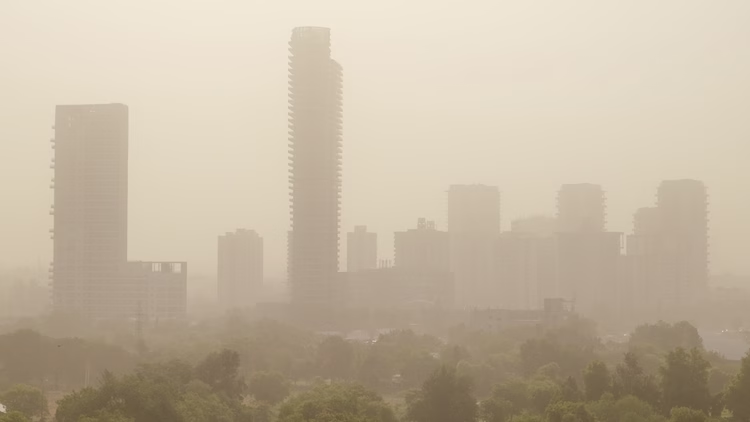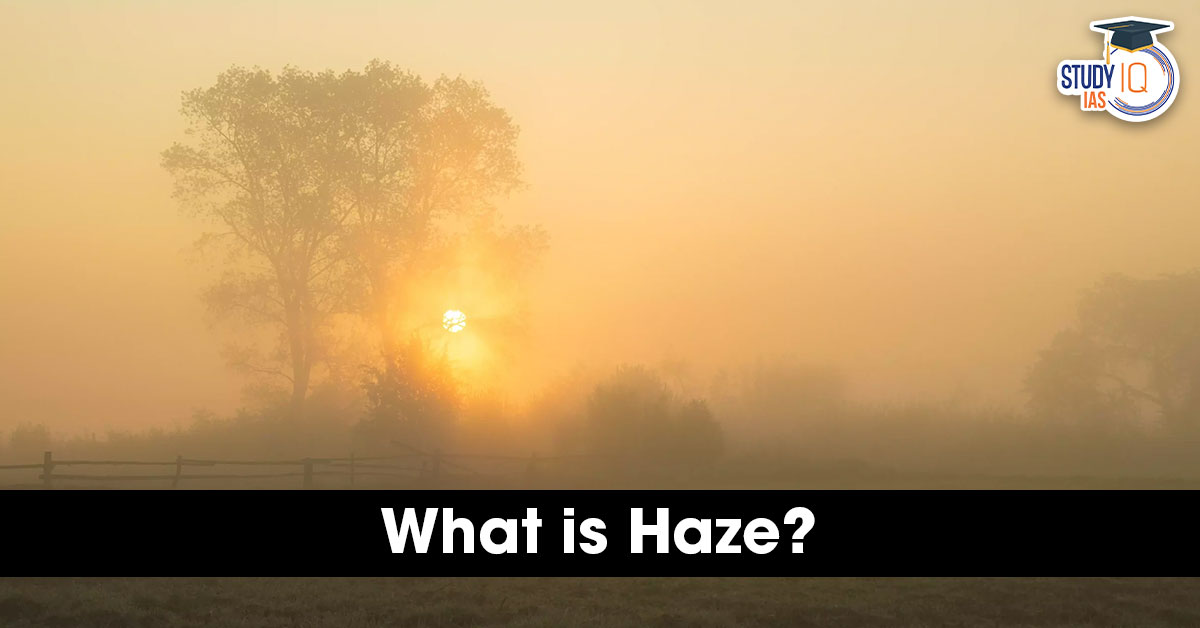Table of Contents
Context: Delhi and the National Capital Region (NCR) faced thick, dusty haze, with visibility sharply reduced across the city.
What is Haze?
Haze is an atmospheric phenomenon where fine dust, smoke, and other dry particles become suspended in the air. Smog is similar to haze but with condensation, which is absent in haze.

Also Read: Delhi Pollution and Air Quality Index (AQI)
Causes of Haze
Natural Sources
- Windblown dust: Fine soil particles carried by the wind.
- Smoke from wildfires: Combustion products released during forest and land fires.
- Volcanic ash: Fine particles ejected during volcanic eruptions.
- Sea salt: Tiny salt crystals that become airborne from ocean spray.
Man-made Sources (Air Pollution)
- Combustion of fossil fuels: Emissions from vehicles, power plants, and industrial facilities release particulate matter, sulfur dioxide, and nitrogen oxides, which can form haze.
- Industrial processes: Manufacturing operations can release dust, smoke, and chemical aerosols.
- Agricultural activities: Activities like stubble burning and plowing in dry conditions can generate dust and smoke.
Impacts of Haze
The thick haze currently enveloping Delhi can have several significant impacts:
On Health
- Respiratory Disorders: The fog is filled with particulate matter (PM10 and PM2.5), which is known to penetrate deep into the lungs, leading to airway irritation, coughing, wheezing, breathlessness, and a feeling of tightness in the chest. It exacerbates diseases such as asthma and bronchitis.
- Cardiovascular Issues: The fine particles even reach the blood and target the heart, which can result in abnormal heartbeat and raise the risk of heart attacks, particularly among people with underlying heart diseases.
- Eye and Throat Irritation: Haze exposure results in itching, watery, and red eyes, followed by a dry or sore throat.
- Vulnerable Groups: The young children, the old, the pregnant women, and the individuals with pre-existing cardiovascular or pulmonary conditions are the most susceptible to the health effects of haze.
- Long-term Impacts: The long-term inhalation of polluted air, including haze, can lead to the establishment of chronic respiratory disease, compromised lung function, and may result in an increased risk of cancer.
On the Environment
- Decreased Visibility: Haze decreases visibility considerably, impacting transportation (road, rail, and air), which may result in delays and accidents. It also hides natural views in scenic areas.
- Effect on Solar Radiation: The particles in haze can absorb and scatter sunlight, decreasing the amount of solar radiation that hits the ground. This can impact photosynthesis in vegetation and may have an effect on solar power generation.
- Acid Rain: Certain haze particles, including sulfates and nitrates, are likely to contribute to acid rain, which can cause injury to vegetation, acidify lakes and streams, and wear down buildings and monuments.
- Effects on Ecosystem: Haze particle deposition may change the nutrient content of water bodies and soil and cause injury to aquatic life and crop growth.
Other Impacts
- Economic Impacts: Tourism and outdoor economic activities may be impacted by reduced visibility. More health problems result in additional healthcare expenses and lower productivity.
- Daily Life: Individuals will restrict outdoor activities, influencing exercise regimes and overall life quality.


 Bonnet Macaques: Habitat, Features, Beha...
Bonnet Macaques: Habitat, Features, Beha...
 Periyar Tiger Reserve, Map, Flora, Fauna...
Periyar Tiger Reserve, Map, Flora, Fauna...
 Project Cheetah in India, Objectives, Ch...
Project Cheetah in India, Objectives, Ch...

























